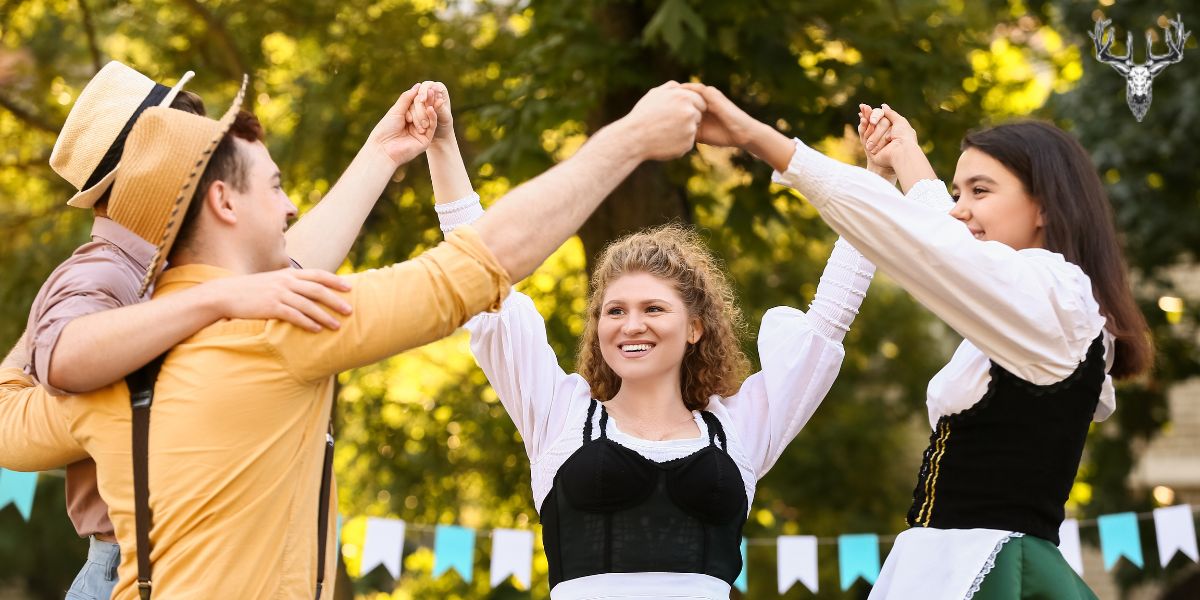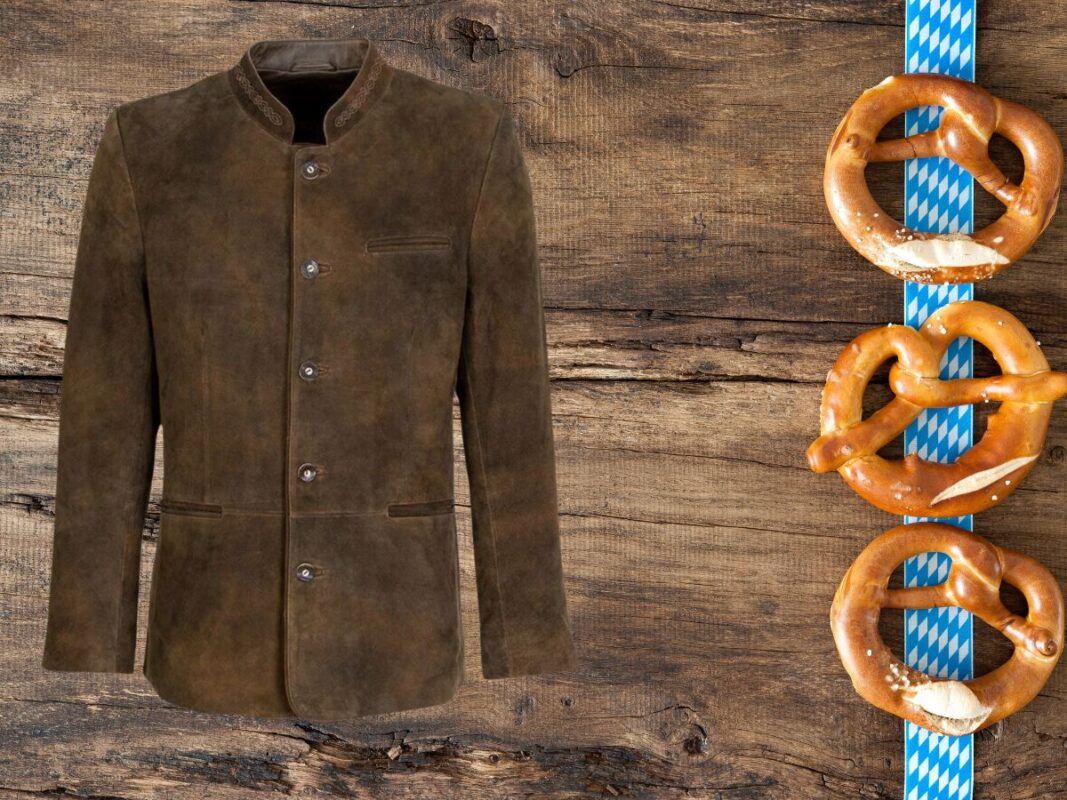Exclusive Sale: Beautiful Dirndl Lederhosen for Everyone
Step into the world of tradition and style as we take you on a journey through the captivating realm of Dirndl Lederhosen. In this complete guide, we will uncover the rich history and cultural significance of these iconic garments, while also exploring the various styles and designs that make them a fashion statement in their own right. Whether you are an admirer of traditional clothing, a fashion enthusiast, or simply curious about the customs of different cultures, this article is sure to pique your interest.
With roots deep in the heart of Bavaria, Dirndl Lederhosen represent a fusion of elegance and rustic charm. We will delve into the craftsmanship involved in creating these garments, highlighting the attention to detail and the quality materials used. From the intricate embroidery to the supple leather, each element plays a vital role in the overall aesthetic appeal.
Join us as we discover the origins of Dirndl Lederhosen, learn how to properly style them, and even gain insights into their modern-day relevance. Whether you’re planning to attend a traditional Oktoberfest celebration or simply want to embrace a unique and timeless fashion statement, this guide is your ultimate resource. Get ready to explore the tradition and style of Dirndl Lederhosen like never before!
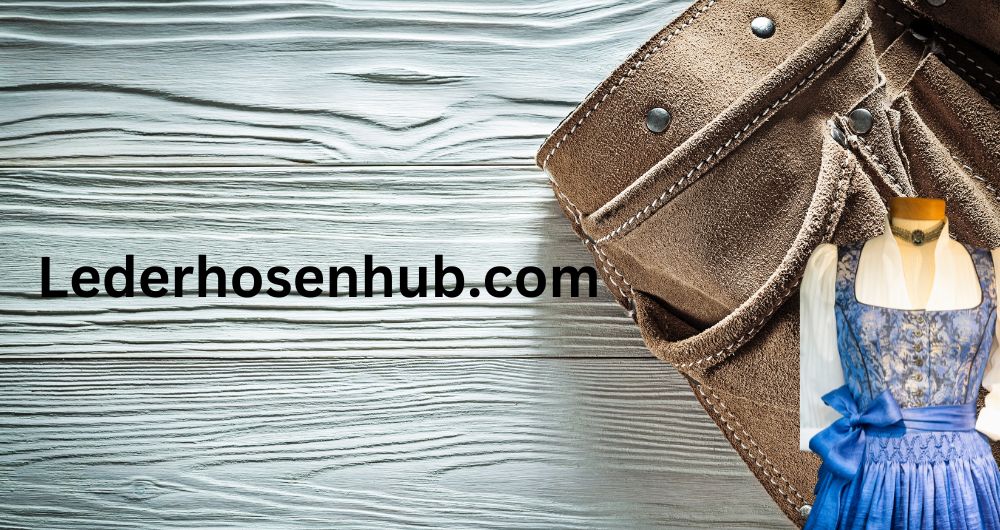
History and Significance of Dirndl Lederhosen
The origins of Dirndl and Lederhosen date back to the rural regions of Bavaria, Germany, and Austria, where these garments served practical purposes for the working class. The Dirndl, traditionally worn by women, is believed to have evolved from the everyday attire of peasant girls in the 19th century. Initially designed for functionality, the Dirndl soon became a symbol of feminine charm and grace, particularly during festive occasions. The name “Dirndl” itself is derived from the Austrian word “Dirndl,” meaning “little girl” or “young woman,” which reflects its roots in youth and vitality.
Lederhosen, on the other hand, were primarily worn by men in the alpine regions. Made from durable leather, these trousers were ideal for labor-intensive work, providing protection against the elements while allowing for freedom of movement. Over time, Lederhosen evolved from a practical work garment to a representation of Bavarian identity and cultural pride. They became particularly popular during the 19th century, aligning with the burgeoning Romantic movement that celebrated folklore and traditional customs.
Together, Dirndl and Lederhosen have transcended their utilitarian origins to become iconic symbols of Bavarian culture. They are prominently featured during Oktoberfest and other regional festivals, where participants don these traditional outfits as a means of celebrating their heritage. The garments evoke a sense of nostalgia, connecting wearers to centuries of tradition and the communal spirit of the Bavarian people. Not just clothing, they represent a living history that fosters a sense of belonging and cultural identity.
Traditional Features of Dirndl Lederhosen
Dirndl and Lederhosen are characterized by distinctive features that highlight their cultural significance. The Dirndl typically consists of a fitted bodice, a full skirt, and an apron. The bodice is often adorned with intricate embroidery, lace, and decorative buttons that reflect regional styles and craftsmanship. The apron, which ties around the waist, can vary in color and design, adding a layer of individuality to the outfit. The length of the skirt can also differ, ranging from knee-length to ankle-length, allowing for personal expression while adhering to traditional aesthetics.
Lederhosen are equally rich in traditional features. Typically made from high-quality leather, these trousers often have decorative stitching, known as “Gamsbart,” which is a tuft of hair from a chamois deer that is traditionally worn on hats. The suspenders, a characteristic feature of Lederhosen, are often elaborately embroidered, showcasing the artisan’s skills. These trousers are usually knee-length, although variations exist, and they can be paired with a variety of shirts, from simple linen to more elaborate designs featuring embroidery or patterns.
Both garments emphasize craftsmanship and attention to detail, with many pieces being hand-made in small workshops. The use of natural materials, such as wool and leather, not only enhances the aesthetic appeal but also ensures durability. These traditional features not only serve to beautify the wearer but also connect them to their cultural roots, making Dirndl and Lederhosen more than just clothing—they are a celebration of heritage and artistry.
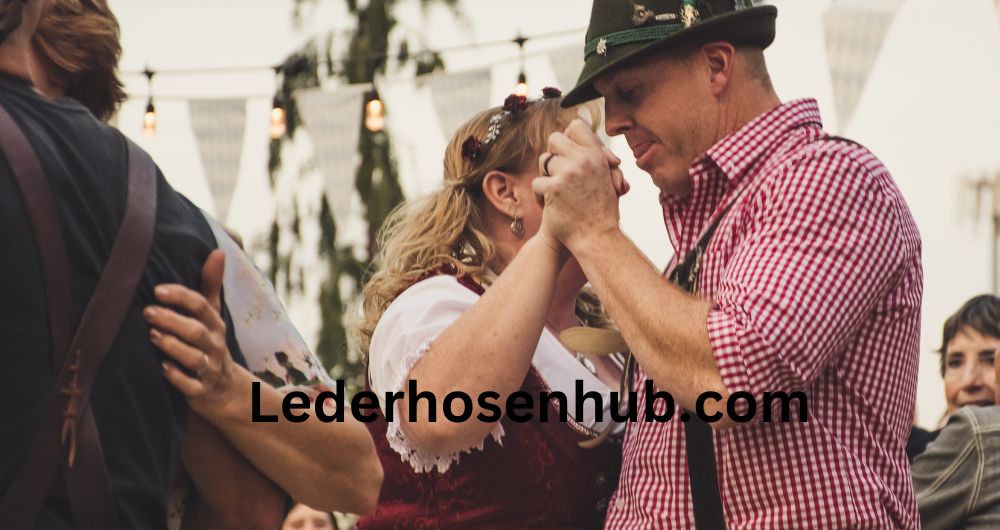
Types of Dirndl Lederhosen for Men and Women
When it comes to Dirndl and Lederhosen, there is a diverse range of styles and types available for both men and women, each reflecting different regional customs and personal preferences. For women, Dirndls can vary significantly in design, with options ranging from simple, everyday styles to elaborate festival outfits. The traditional Dirndl is often accompanied by a blouse, which can feature puffed sleeves or lace trim. Additionally, the length of the skirt contributes to the overall style; longer skirts tend to convey a more formal appearance, whereas shorter skirts are often seen as playful and modern.
Men’s Lederhosen also come in various styles, distinguished by the material, length, and embellishments. The classic Lederhosen is made from soft, tanned leather and typically features a high waist and knee-length cut. However, modern variations include longer styles that reach below the knee, adapting to contemporary fashion trends. They also come in different colors, with traditional brown and green hues being the most popular.
Accessories play an important role in both Dirndl and Lederhosen styles. Women often enhance their Dirndl with a variety of accessories, including traditional jewelry, hats, and even handbags that complement the outfit. Men can accessorize their Lederhosen with hats adorned with feathers, decorative belts, and boots that complete the ensemble. Each piece serves to personalize the outfit while maintaining respect for the traditional aesthetic.
How to Choose the Right Dirndl Lederhosen for You
Selecting the perfect Dirndl or Lederhosen requires consideration of several factors, including personal style, body shape, and the occasion for wearing the outfit. When choosing a Dirndl, it is essential to focus on the fit of the bodice, as a well-fitted bodice enhances both comfort and appearance. Opt for styles that flatter your body shape; for instance, A-line skirts can be more forgiving for various figures, while a fitted bodice can accentuate curves. Additionally, consider the fabric and embellishments, as they can significantly impact the overall look of the Dirndl.
For men, selecting the right Lederhosen involves paying attention to the length and cut. Traditional knee-length styles are versatile and can be dressed up or down, making them suitable for various occasions. Ensure that the trousers fit comfortably at the waist, as sizing can vary between brands. In terms of material, look for high-quality leather that feels soft and supple rather than stiff. This will not only provide comfort but also ensure that the Lederhosen will age beautifully over time.
Another important aspect to consider is the color and pattern of the Dirndl or Lederhosen. While traditional colors like green, brown, and red are timeless choices, contemporary styles may incorporate bolder hues and patterns. If you’re attending a specific event, such as Oktoberfest, it may be beneficial to research the traditional colors associated with that celebration. Ultimately, the right Dirndl or Lederhosen should reflect your personal style while honoring the rich cultural heritage from which these garments originate.
Styling Tips for Wearing Dirndl Lederhosen
Wearing Dirndl and Lederhosen is not just about the garments themselves; it’s also about how you style them to create a complete and cohesive look. For women, pairing the Dirndl with the right blouse can make all the difference. Opt for a blouse that complements the color of the Dirndl while providing a touch of elegance. Lace or embroidered details can add a romantic flair, while a simple white blouse can create a classic appearance. Additionally, consider the apron; tying it in a bow at the back is traditional, but wearing it to the front on the left side signals that you are single, while tying it on the right side indicates that you are taken.
Men can elevate their Lederhosen look with the right shirt and accessories. A crisp white or checkered shirt helps to maintain a classic Bavarian aesthetic. For a more festive vibe, consider wearing a shirt with subtle patterns or colors that complement the leather. Adding traditional accessories, such as a feathered hat or a decorative belt, can enhance the overall appearance, making it feel more complete and stylish.
Footwear also plays a significant role in styling Dirndl and Lederhosen. Women often pair their Dirndls with comfortable yet stylish shoes such as ankle boots or traditional Bavarian shoes called “Haferlschuhe.” For men, sturdy shoes that match the leather of the Lederhosen are ideal. It’s essential to prioritize comfort, especially during long events like Oktoberfest, where you’ll be on your feet. Remember, the key to a polished look is ensuring that all elements of your outfit are in harmony, from clothing to accessories to footwear.
Where to Buy Authentic Dirndl Lederhosen
Finding authentic Dirndl Lederhosen can be an exciting journey, as these garments are available from various sources that celebrate traditional craftsmanship. For those seeking high-quality pieces, specialty boutiques in Germany and Austria often carry a wide range of Dirndl Lederhosen options, showcasing regional styles and artisanal features. Visiting local markets can also yield unique finds, as many artisans sell their creations directly, allowing you to discover pieces that embody genuine cultural significance.
In addition to physical stores, online shopping has made it easier than ever to access authentic Dirndl Lederhosen. Many reputable retailers offer a selection of traditional and modern styles, complete with detailed descriptions and sizing guides. Websites that focus on cultural clothing or folk fashion often provide a curated assortment, ensuring that customers can find high-quality garments that honor the tradition. However, it is vital to check for customer reviews and return policies to ensure a satisfying shopping experience.
Custom-made Dirndl Lederhosen are also an option for those who want a personal touch. Many artisans and tailors specialize in creating bespoke garments that fit your specifications, allowing for customization in terms of design, fabric, and size. This not only supports local craftsmanship but also results in a unique piece that reflects your personal style and connection to Bavarian culture. Whether you choose to shop locally or online, the key is to seek out authentic sources that prioritize quality and tradition.
Maintenance and Care for Dirndl Lederhosen
Proper maintenance and care are essential for preserving the beauty and longevity of your Dirndl Lederhosen. For Dirndls, regular cleaning is necessary to keep the fabric looking fresh and vibrant. Most Dirndls can be washed by hand or on a delicate cycle in a washing machine, but it’s crucial to check the care label for specific instructions. Avoid using harsh detergents, as they can damage delicate fabrics; instead, opt for gentle, eco-friendly options. After washing, air drying is recommended to prevent shrinking or damaging the garment’s structure.
Lederhosen require a different approach to care due to the nature of leather. Regularly brushing off dirt and dust with a soft cloth or brush can help maintain their appearance. If your Lederhosen become stained or soiled, it’s best to consult a professional leather cleaner to avoid damaging the material. Conditioning the leather periodically with a specialized leather cream or oil will keep it supple and prevent cracking. Proper storage is also important; hanging your Lederhosen in a cool, dry place will help maintain their shape and integrity.
In addition to cleaning, it’s wise to regularly inspect both Dirndl and Lederhosen for any signs of wear or damage. Promptly repairing minor issues, such as loose threads or small tears, can prevent larger problems down the line. Understanding the specific care requirements for each garment will ensure that they continue to be cherished pieces in your wardrobe for many years to come, allowing you to celebrate Bavarian culture with pride.
Dirndl and Lederhosen in Modern Fashion
In recent years, Dirndl and Lederhosen have made notable strides into the realm of modern fashion, adapting to contemporary trends while still honoring their traditional roots. Fashion designers around the world have embraced these garments, incorporating elements of Dirndl and Lederhosen into high fashion collections, streetwear, and even casual attire. This fusion of styles has helped to elevate the perception of traditional Bavarian clothing and introduce it to a wider audience.
The modern interpretation of Dirndl often includes bolder colors, creative patterns, and innovative designs that cater to younger generations. Many contemporary Dirndl feature shorter skirts, playful prints, and unique fabrics, making them suitable for a variety of occasions beyond traditional festivals. This evolution has encouraged young women to embrace their cultural heritage while expressing their individuality through fashion.
Similarly, Lederhosen have found their place in modern wardrobes, with many men opting for stylish variations that incorporate contemporary materials and cuts. Designers have experimented with different textures, such as denim and cotton blends, while still maintaining the classic leather look. This versatility allows for a casual yet stylish appearance that resonates with today’s fashion landscape. The rise of Dirndl and Lederhosen in modern fashion not only celebrates tradition but also provides a platform for creativity and self-expression.
Conclusion and Embracing the Tradition of Dirndl and Lederhosen
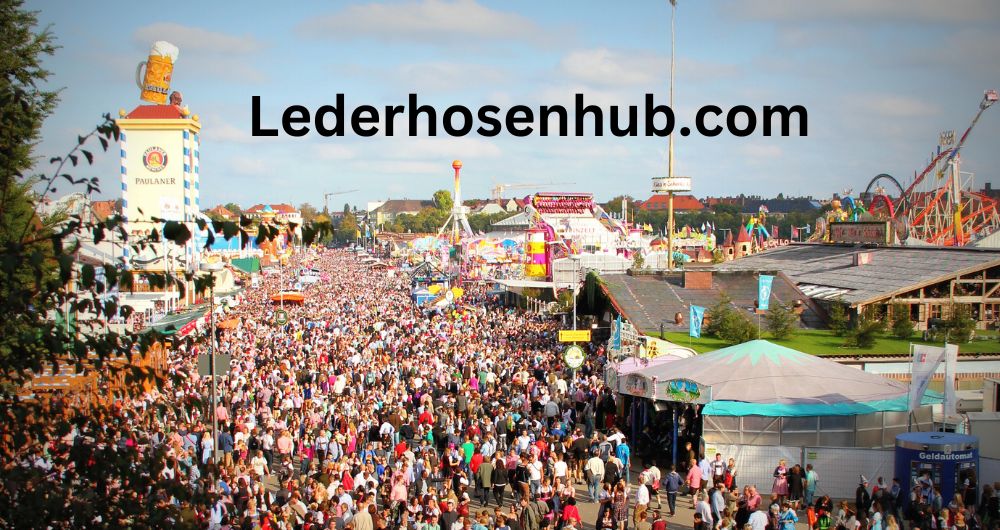
As we conclude our exploration of Dirndl and Lederhosen, it is clear that these garments are more than just clothing; they are a vibrant representation of Bavarian culture and heritage. The rich history, traditional craftsmanship, and modern adaptations make Dirndl and Lederhosen unique fashion statements that resonate with both local communities and global audiences. Wearing these outfits allows individuals to connect with a profound sense of identity, celebrating the customs and traditions passed down through generations.
Embracing the tradition of Dirndl and Lederhosen invites us to appreciate the artistry and dedication behind these garments. Whether attending a festival, participating in cultural events, or simply enjoying everyday life, wearing a Dirndl or Lederhosen offers a way to honor the past while engaging in the present. By choosing authentic pieces and caring for them diligently, we can ensure that these timeless garments continue to thrive in our wardrobes.
In a world where fast fashion often overshadows tradition, Dirndl and Lederhosen stand as symbols of lasting quality and cultural pride. As you embark on your journey to discover or don these beautiful outfits Dirndl Lederhosen, remember that each piece carries a story—one that connects you to the heart of Bavarian culture and to a community that values heritage and craftsmanship. Whether you’re a newcomer or a longtime admirer, there’s always room to embrace the tradition and style of Dirndl and Lederhosen in your life.


